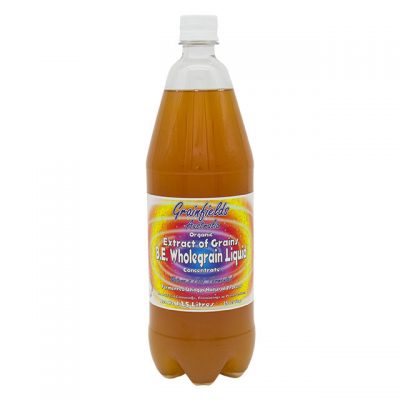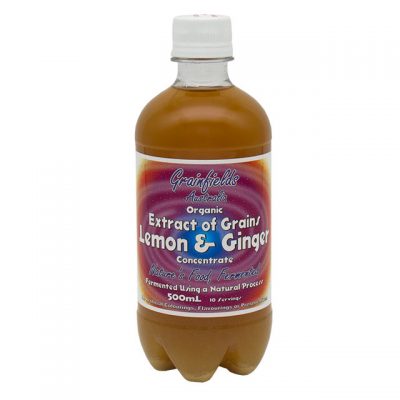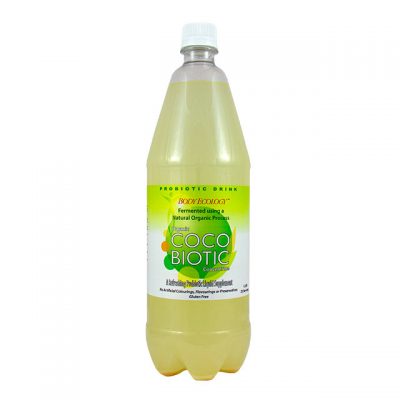“Digestion – the chemical and physical breakdown of foods into simpler molecular units.”
“Absorption – the passage of digested foods from the digestive tract into the circulatory system.”
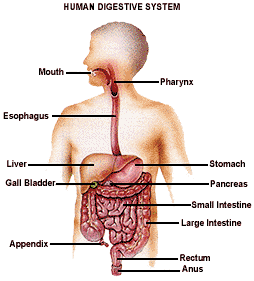 The human body is like a machine built from and fuelled with food. But for our cells to use the food, it must first be converted into simple chemicals which will enter the bloodstream and so travel to where they are needed. This is the job of our digestive system.
The human body is like a machine built from and fuelled with food. But for our cells to use the food, it must first be converted into simple chemicals which will enter the bloodstream and so travel to where they are needed. This is the job of our digestive system.
The energy required for maintenance and proper functioning of the human body is supplied by food. Even before the first bite is taken, salivary juices have begun to flow into the mouth, in preparation for the entrance of food. The sight, smell, or merely the thought of food can initiate this reflex secretion of saliva. After food has entered the mouth, the taste of food – or even food just touching the tongue – further stimulates salivary production. Gastric juice also begins to flow (in the stomach) when psychological stimuli, such as the sight or smell of food, are encountered.
The path of food and drink
Food enters the body through the uppermost portion of the digestive tract, the mouth. Here it is chewed and moistened to facilitate swallowing, and an enzyme is added to it to begin its breakdown into smaller particles. Such reduction in particle size is essential because food ‘as is’, even when thoroughly chewed, cannot be absorbed from the intestine into the circulatory system. Food must be altered chemically as well as physically before being absorbed. The taste buds mediate sensations of sweetness, saltiness, sourness, and bitterness. Taste buds are nerve endings that are highly specialized to detect differences in the chemical properties of various foods.
Food is quickly swallowed (often without thorough chewing) and passes through the pharynx and down the esophagus or food tube to the stomach, where it is temporarily stored. In this organ, more enzymes and hydrochloric acid are added to the food and a certain amount of mechanical mixing and massage takes place. The stomach serves as a bag for the temporary storage and partial digestion of food, it churns and breaks up food and mixes the pieces with gastric juice, and it produces enzymes and hormones. Alcohol, certain drugs, and moderate amounts of sugar and water are absorbed by the stomach wall.
After a variable length of time, the partially digested food leaves the stomach and enters the first 25cm of the small intestine, the duodenum. Here, secrections of the liver and pancreas are added, along with a secretion of the duodenum itself. The liver produces bile, a watery fluid that is important in the emulsification of fats prior to their digestion by enzymes. Pancreatic juice contains enzymes that hydrolyze all three kinds of food: a protease, trypsin; pancreatic amylase; and pancreatic lipase. The duodenum is continuous with the next portion of the small intestine, the jejunum, which in turn is continuous with the next portion, the ileum. Intestinal juice is added as food moves through all portions of the small intestine, and most digestion and absorption takes place within this portion of the digestive tract. The small intestine completes digestion begun by the stomach and absorbs digested foods into the blood and lymph. Certain hormones – including some that aid in regulating the production of bile, intestinal juice, and pancreatic juice – are secreted by the small intestine.
After the small intestine has coiled for over 6m in the abdomen, the distal end of the ileum joins the first portion of the large intestine or colon. All unabsorbed food passes into the large intestine as waste, and although absorption of large quantities of water and small amounts of other substances occurs in this portion of the digestive tract, the colon serves largely as an organ to eliminate solid wastes from the body. The chief functions of the large intestine are the absorption of water and the elimination of solid wastes; however, one other significant contribution to health is made by the large intestine, it is known that quantities of vitamin K (which is necessary to the normal clotting of blood) and B-complex vitamins are manufactured by some of the bacteria in the large intestine.
During the passage of unabsorbed food through the small and large intestine, bacterial action converts the bile pigments into stercobilin, which produces the brown colour of faeces, the solid waste that is periodically eliminated from the intestine. A good deal of bacterial decomposition goes on in the large bowel. Such gases as hydrogen sulfide, ammonia, carbon dioxide, methane, and hygrogen are produced as a result of this decomposition in the large intestine. Waste products of amino acids and butyric acid, acetic, and lactic acids are also produced. Many of these substances – especially amino acids’ waste products, and hydrogen sulfide – impart odours characteristic of faecal matter.
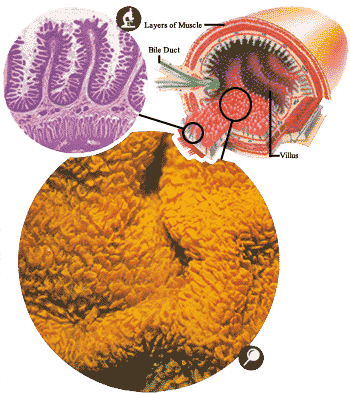 Section of Intestine
Section of Intestine
Each day your digestive system will handle about 10L (18 pints), of food and drink from your stomach and intestines. Only about 125mL (one pint) of this leaves your body as faeces. The rest is absorbed into capillaries and lymph vessels in the walls of the intestines (see photo and illustration uppermost). Most absorption takes place in the duodenum (bottom photo). The walls of your intestines are so highly folded that they have a surface area that would be larger than a tennis court if they were to be spread out flat.
References:
1. “Anatomy”, Microsoft(R) Encarta(R) 98 Encyclopedia. (c) 1993-1997 Microsoft Corporation.
2. “Anatomy and Physiology”, William F. Evans, Second Edition, 1976 by PRENTICE-HALL, INC., Englewood Cliffs, New Jersey
3. “Science through the Microscope”, Aladdin Books Ltd 1995, Shooting Star Press Inc., New York


